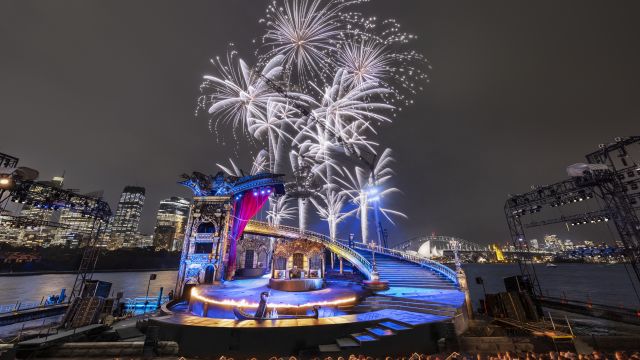The Phantom of the Opera
All afternoon weather warnings had interrupted every ‘Drive Time’ radio program. Heavy rain had pelted down in intermittent bursts. Storm clouds still hovered menacingly. Yet from 5.30 until 10.30pm not a drop of rain fell on Sydney Harbour for the opening night of this, the very first open-air performance of The Phantom of the Opera in 35 years.
Was it because composer Andrew Lloyd Webber himself was to be in the audience? Or was it the Phantom himself who cast a spell on the weather? And did his power last only for those few hours? Because ten minutes after the finale, the rain came! In big, heavy drops! The cast, the crew, director Simon Phillips, designer Gabriela Tylesova, the technicians – and the crane operators – must have breathed a collective sigh of relief as “slowly, gently night unfurled its splendour” on this spectacular production.
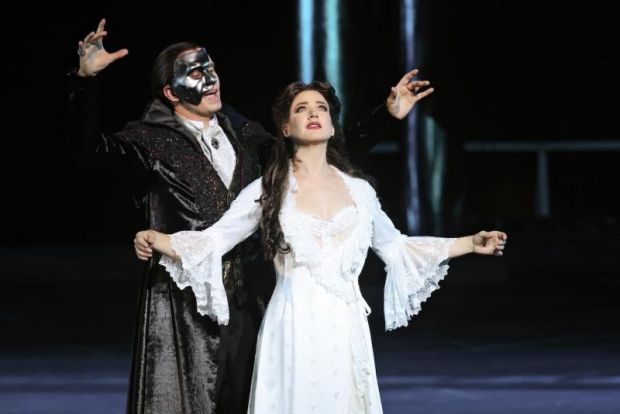
“Spectacular” is often used to describe these productions and rightly so. The stage is lifted by two cranes onto pylons to make it appear to be ‘floating’. Gabriela Tylesova’s imaginative set involved 150 builders and painters in its construction. A gold balutsraded staircase sweeps up across the wide stage (2.5 metres larger than any indoor stage in Australia) to the towering pillar of the Paris Opera theatre and the Phantom’s special box. The legendary chandelier, that is a replica of the original chandelier at Paris Opera Garnier, is strung with 80 light bulbs and is, of course, a feature of the production. So too is the gondola – or gondolas – in which Christine is ferried into the Parisian sewers beneath the Opera House. The ingenuity of how this is achieved is typical Phillips and Tylesova working in clever collaboration.

Tylesova’s costumes, too, are spectacular. Fastidiously based on the fashions of the 1880s, yet in breath-takingly beautiful contemporary colours and fabrics, they glimmer under the myriad lighting effects designed by Nick Schlieper. For the Masquerade, she lets “the spectacle surround” the stage with a kaleidoscope of colourful, sparkling characters, none more fun than the Monsieur Firmin and Monsieur André as shiny, hairy bears.

Joshua Robson as the Phantom sparkles too, in long, velvety coats braided in gold and silver, with buttons that glitter and glossy masks, one in vivid red, and another, more sinister, that shimmers as if burnished in mercury. Robson wears this finery with a panache as potent as his powerful voice and the controlling fear it infuses under the hovering night sky. His Phantom embodies the inner turmoil and loneliness of the man – and his need for acceptance and the compassion he finally gets from Christine.
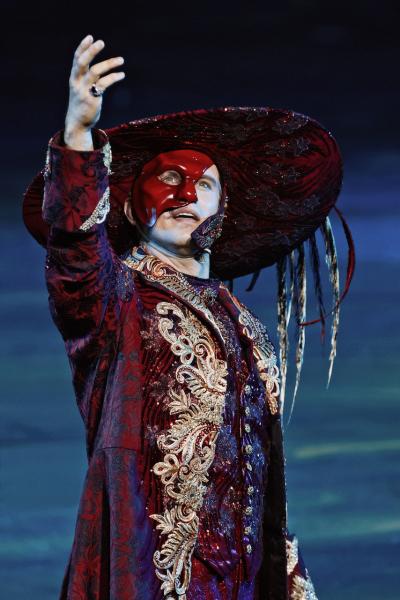
Georgina Hopson plays Christine with a naivety that allows her character to vacillate between the fear instilled by the Phantom and her love for Raoul. There is no such vacillation in the power of her voice or the emotions that fill her words. Her sweet innocence rings out as clearly as her fear – and eventually her understanding empathy of the Phantom’s plight.
Callum Francis is her loving protector, Raoul. Francis steps into this role with confident poise, giving his character the self-assuredness that counterpoints the heaviness of his rival in both action and voice, especially when all three sing together.
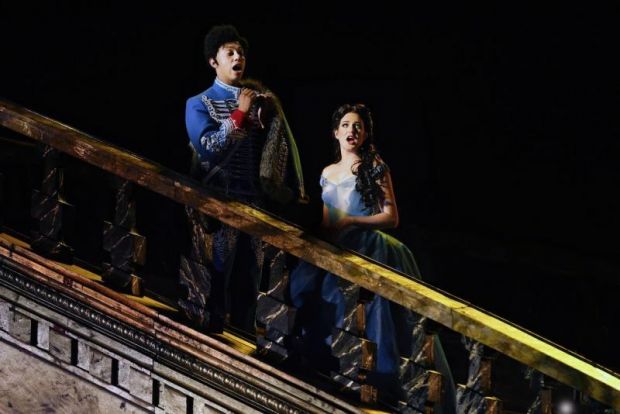
The diva, Carlotta Giudicelli, is played by Naomi Johns who obviously delights in the various vocal and emotional demands of this role. She moves with ease from operatic soprano in a rehearsal of Hannibal, to temperamental prima donna, to an object of ridicule by the Phantom – and she does so with fine voice and equally fine comedic timing.
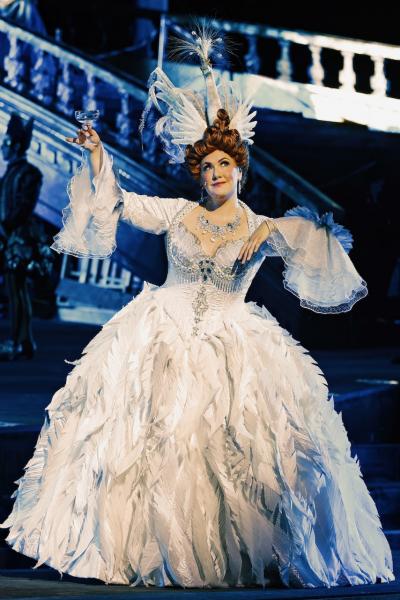
Paul Tabone is Ubaldo Piangi, her Hannibal. He too has a fine voice and excellent comic timing. Together they make the ‘operatic couple’ a continuing feature of the production – as do Michael Cormick and Martin Crewes as Messieurs Firmin and André. Both bring a wealth of stage experience and vocal prowess to the production.

Maree Johnson and Kelsi Boyden contrast as the ballet mistress, Madame Giry and her ballerina daughter Meg – the former strict but kind, the latter impulsive and sympathetic.
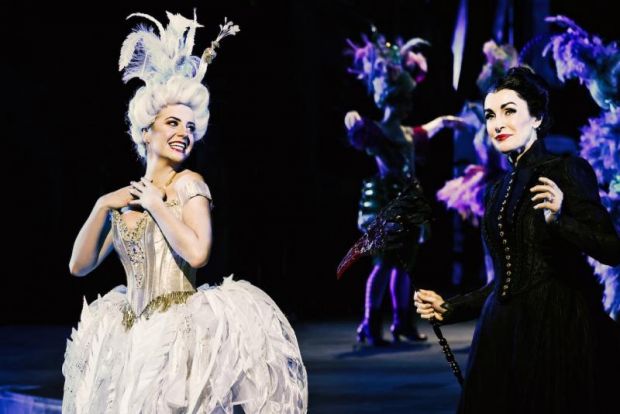
Together with an ensemble of 36 singers and dancers (choreographed by Simone Sault), they re-tell Lloyd-Webber, Richard Stilgoe and Charles Hart’s interpretation of Gaston Leroux’s 1910 novel in the music and words that have entertained the world. They do so with the support of an orchestra of 27 musicians hidden beneath the stage in a specially built orchestra studio, from which conductor Guy Simpson connects with the singers via ‘in-ear monitors’ as well as television monitors. Sound designer Shelly Lee complements the music with creative effects made possible by the plein air setting.

It takes a crew of 45 to ‘manage’ a production as big, complicated, and weather dependent, as this. Imagine the safety precautions needed for the metres of electrical wiring. Imagine the intricate manoeuvring of the crane from which the chandelier is suspended. Even keeping the stage dry must be a mammoth task in the “unprecedented” weather Sydney has experienced of late.

The creative team have realised Simon Phillip’s concept of encouraging people “to imagine a point of reference beyond their own … and empathise with a life dramatically different – one that might change an otherwise promising, even brilliant human being into a damaged psychopath”. A life that Joshua Robson epitomes as his Phantom’s power, under Phillip’s direction, “is there inside our minds”.
Carol Wimmer
Photographer: Prudence Upton

Subscribe to our E-Newsletter, buy our latest print edition or find a Performing Arts book at Book Nook.

